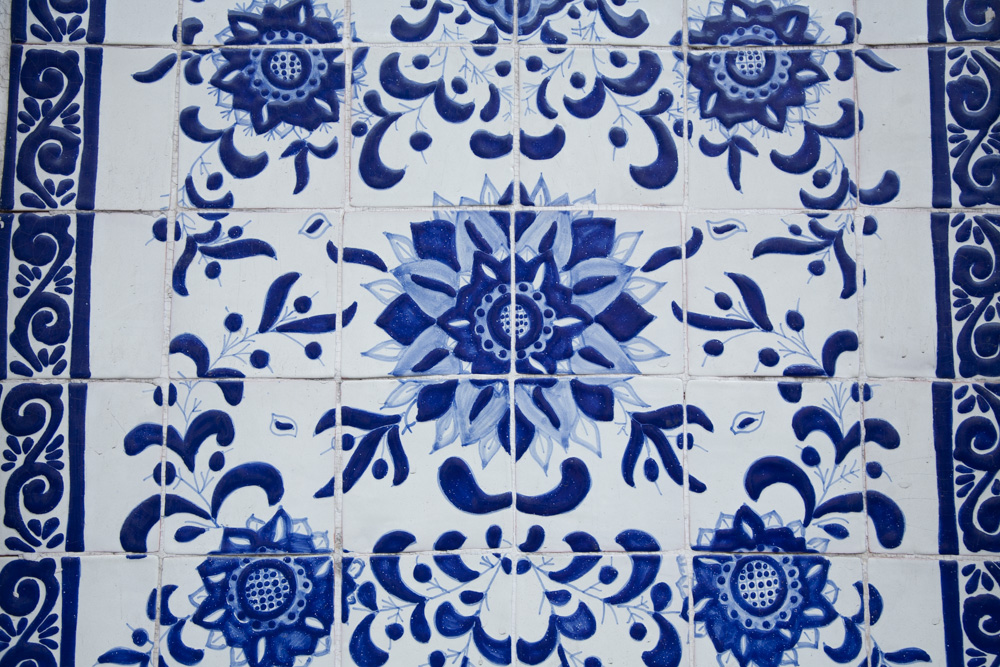Talavera in Puebla is a type of maiolica (mayolica or majolica) pottery which only comes from the city of Puebla and the nearby communities of Atlixco, Cholula, and Tecali, because of the quality of the natural clay found there and the tradition of production which goes back to the 16th century. Much of this pottery is decorated only in blue, but you will also see yellow, black, green, orange and mauve used as well. Ths colors must be made of natural pigments. You will see many building facades throughout Puebla that are decorated with these tiles.


Maiolica pottery was brought to Mexico by the Spanish. The tradition was brought to Spain by the Moors in the 12th century. Puebla became a center of this pottery due to the availability of fine clays and the demand for tiles from the newly established churches and monasteries being built. The “golden age” of Talavera pottery was from 1650 to 1750. The tradition that developed there is called Talavera Poblana as opposed to the Talavera pottery made in Spain. It is a mixture of Italian, Spanish and indigenous ceramic techniques.



In order to promote this art, there are recent laws that govern the methods, colors and who can manufacture the Talavera pieces. Lab tests and inspections are conducted. Only pieces made by designated areas and from workshops that have been certified are permitted to call their work “Talavera”. Only nine workshops have so far been certified: Uriarte Talavera, Talavera La Reyna, Talavera Armando, Talavera Celia, Talavera Santa Catarina, Talavera de la Nueva Espana, Talavera de la Luz, Talavera de las Americas and Talavera Virglio Perez.

Make sure to visit Talavera La Reyna which has a spectacular showroom and museum. They produce traditional pieces but their contemporary ceramic pieces are really wonderful. It is located at Lateral Sur Recta a Cholula 3510 in Cholula. It is a very attractive, contemporary space that is well worth the visit. Another good choice is Talavera Santa Catarina. Their store and workshop is located at Prol. 14 Oriente 1402, San Andres, Cholula. Their pieces are very attractive.


Uriarte Talavera, has been firing ceramics since 1824 in what is now one of the last workshops downtown. In addition to its showroom and kilns, Uriarte includes a small museum featuring works by contemporary artists. 4 Poniente 911.






